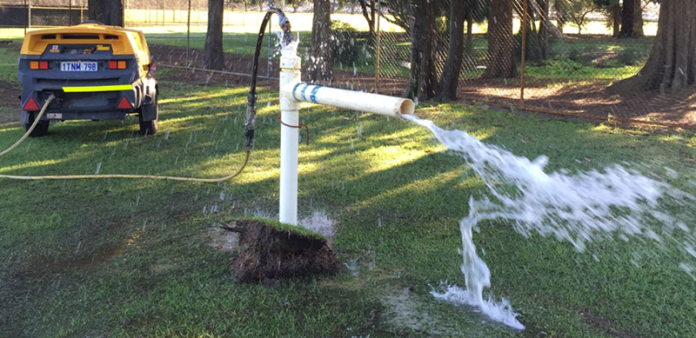Accessing a reliable water source is essential for any property owner, whether for household use, irrigation, or livestock. Installing a water bore on your property can provide a sustainable and cost-effective solution to meet these needs. In this blog, we will explore the benefits, considerations, and steps involved in drilling a water bore, helping you make an informed decision.
Understanding Water Bores
A water bore, also known as a borehole or well, is a narrow, deep hole drilled into the ground to access underground water reserves called aquifers. These aquifers are natural underground layers of water-bearing rock or sediment that store groundwater replenished by rain and surface water seeping through the soil. By tapping into these hidden reservoirs, property owners can secure a consistent and often cleaner water supply compared to surface water sources.
Benefits of Installing a Water Bore on Your Property
- Sustainable Water Supply: Boreholes provide a reliable and sustainable water source, especially crucial in arid areas or regions with water scarcity issues. Unlike surface water, groundwater accessed through boreholes offers a consistent and often cleaner alternative.
- Cost Savings: After the initial setup cost, boreholes can often be a more economical alternative to the municipal water supply, particularly for large-scale water consumers. By utilizing bore water for various purposes such as irrigation, gardening, or even household use, you can save money on your water bills over time.
- Enhanced Property Value: The installation of a water bore system can increase the value of your property. Potential buyers are attracted to properties with self-sufficient water sources, as it provides them with peace of mind that they won’t face water shortages in the future.
- Environmental Sustainability: Water bore drilling promotes environmental sustainability. By utilizing underground water sources, water bores help conserve surface water and reduce the strain on traditional water supply. This is especially important in areas where water resources are limited or prone to depletion during dry seasons.
- Water Usage: The water extracted from a bore can be utilized for various purposes, including irrigation and household needs. This flexibility allows homeowners and businesses to meet their specific water requirements without relying solely on external sources. It also offers the freedom to manage water usage efficiently and allocate resources where they are most needed.
Key Considerations Before Drilling a Water Bore
Before installing a water bore on your property, it’s essential to consider several factors to ensure the project’s success:
- Legal and Environmental Aspects: Before starting a water bore drilling project, you need to understand the local laws and environmental regulations. Permissions may be required, and there could be restrictions on the amount of water that can be extracted.
- Soil and Groundwater Conditions: Understanding the soil and groundwater conditions is crucial. Certain types of soil can complicate the drilling process, while poor groundwater quality may require additional treatment methods.
- Cost and Maintenance: The cost of water bore drilling can vary depending on the depth, location, and soil conditions. Furthermore, the system requires regular maintenance to ensure its longevity and efficiency.
- Selecting a Qualified Drilling Company: Choosing the right drilling professional is vital for the success of your borehole project. Look for experience, positive client feedback, and proper licensing. A reputable company will guide you through the process, ensuring compliance with regulations and optimal borehole performance.
The Water Bore Drilling Process
Understanding the steps involved in drilling a water bore can help you prepare for the project:
- Initial Ground Assessment: Before starting the drilling process, a comprehensive ground survey, often involving geophysical methods and hydrogeological assessments, is necessary. It ensures the identification of the most favorable location for the borehole, considering the depth and quality of the water table, geological characteristics, and level of pollution.
- Drilling the Borehole: The next step is to drill the borehole. This is done using specialist machinery that bores into the ground until the water table is reached. Depending on the conditions, different drilling methods such as rotary, percussion, or direct push can be used.
- Installation of the Pump System: Once the borehole is drilled, a casing is installed to prevent the hole from collapsing and to protect the water from contamination. A pump system is then put in place to extract the water from the borehole.
- Testing the Bore: After installation, the system is tested to ensure it functions correctly and meets the required standards. This includes water quality testing to confirm its suitability for daily use.
Maintenance and Sustainability
Regular maintenance of your water bore system is essential to ensure its longevity and efficiency. This includes routine checks, water quality testing, and servicing of the pump and other parts. Proper maintenance helps prevent issues such as contamination, equipment failure, and reduced water flow, ensuring a reliable water supply for years to come.
In conclusion, installing a water bore on your property offers numerous benefits, including a sustainable water supply, cost savings, and increased property value. By carefully considering the factors outlined above and engaging with experienced professionals, you can successfully install a water bore.

